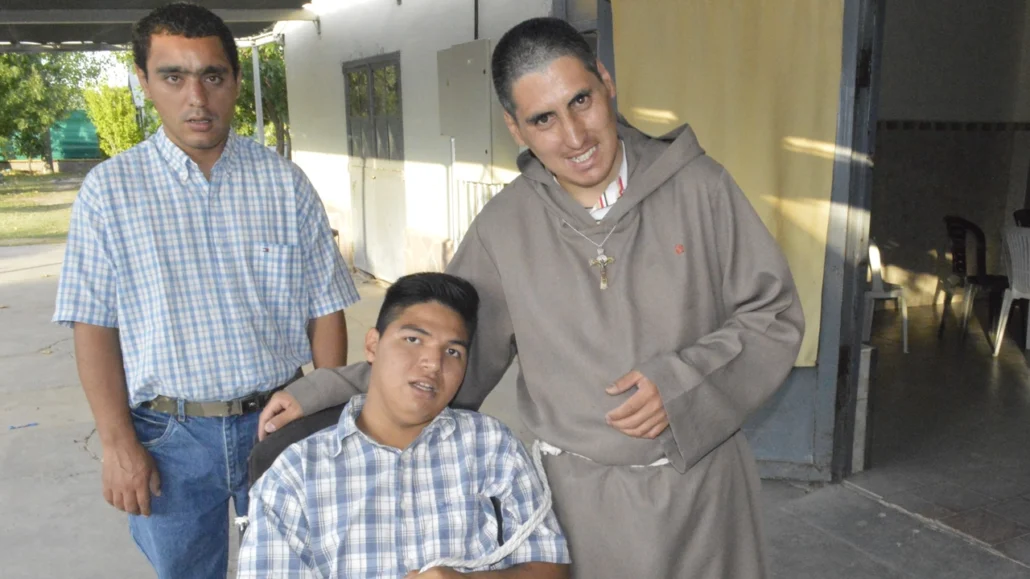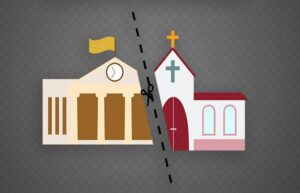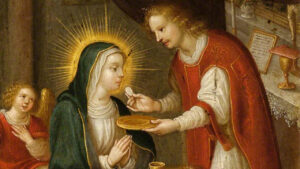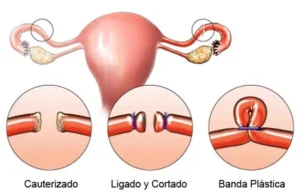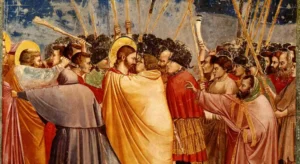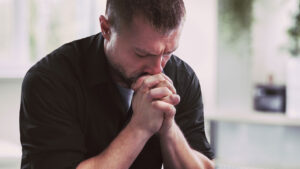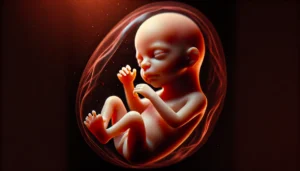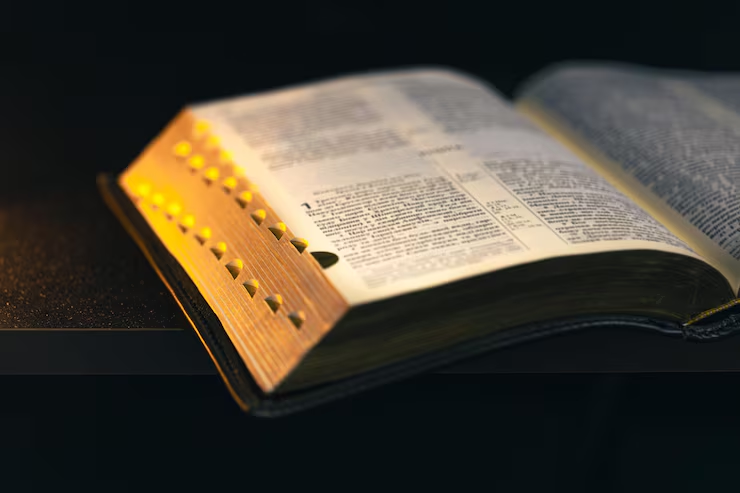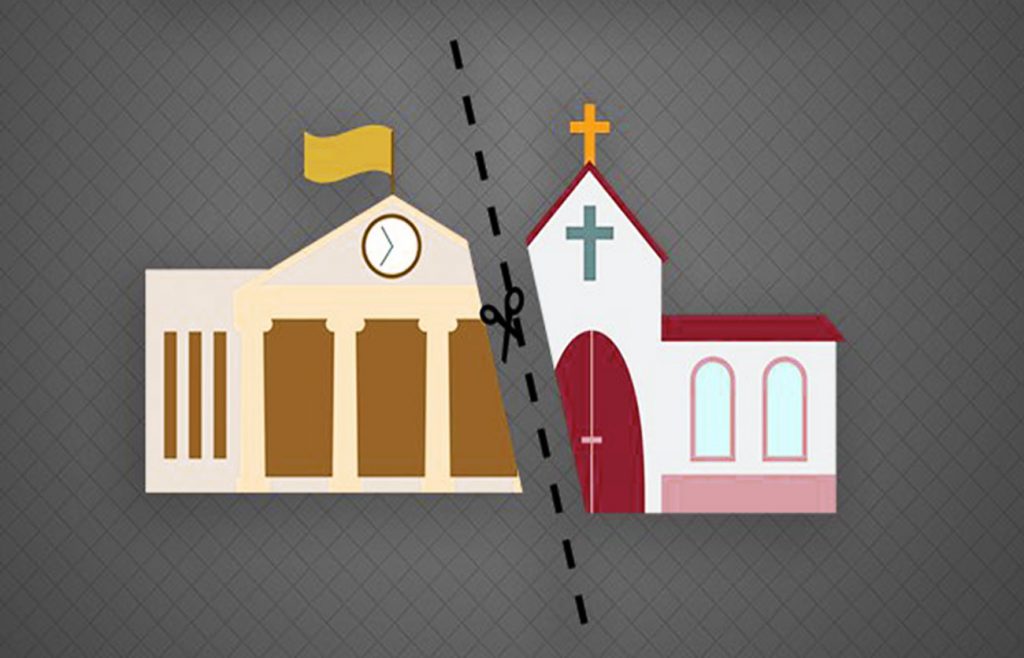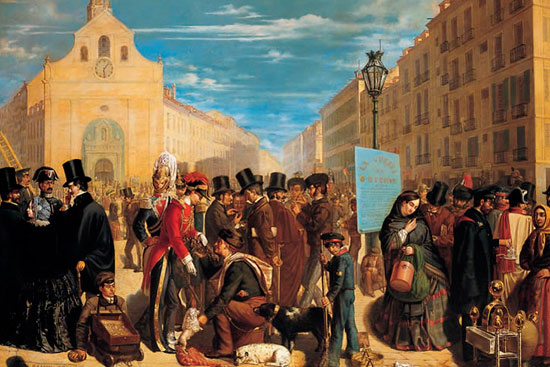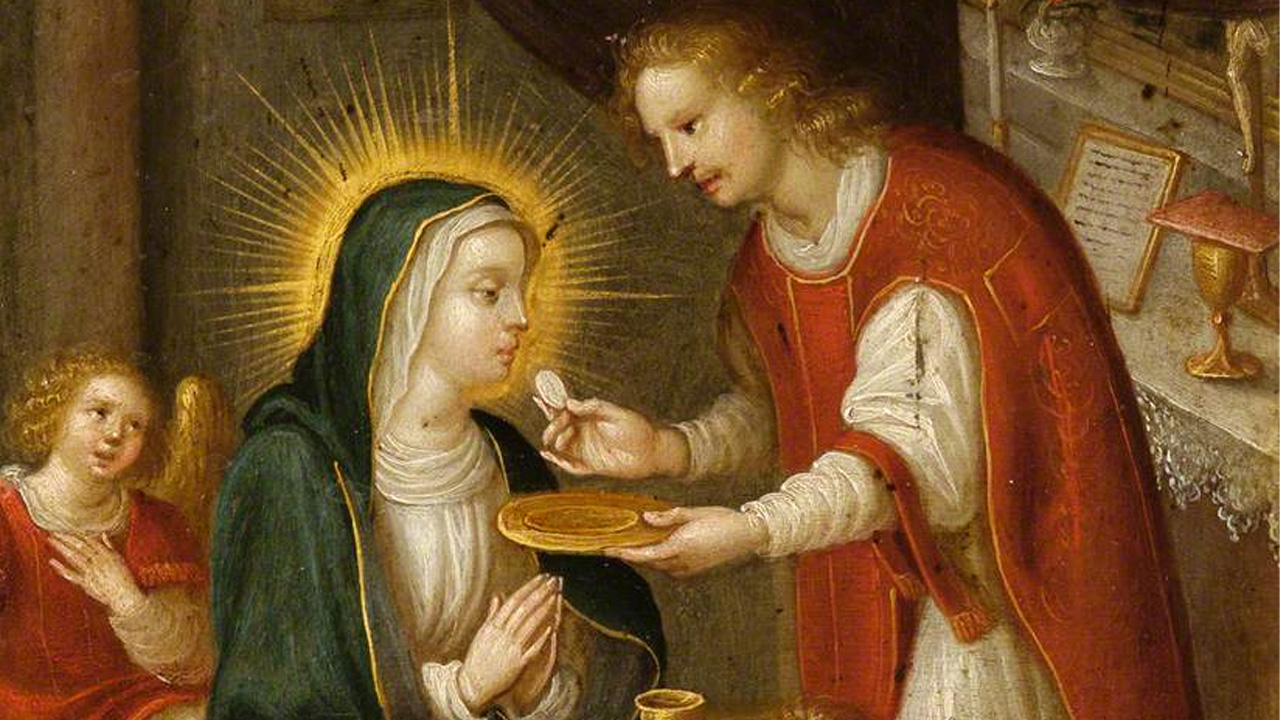Question:
I would like to understand the position of Fr. Ennio Innocenti’s statements in Dialogue No. 11 that seem to reduce holiness to the state of full consciousness and to depend entirely on it. Wouldn’t denying the possibility of holiness to those who do not have a full conscience imply excluding a great number of people from holiness and from the Church?[1] [2].
Answer:
- The State of the Question
First of all, I would like to delimit a concept: when Ennio Innocenti (like Leandro Ancona whom he refutes) speaks of ‘holiness’, he is not referring to the holiness that we could define, with apologies for the inaccuracy of the term, as ‘passive’: that is, the holiness that consists in the indwelling of the Trinity by grace in the soul of those who do not yet have the use of their faculties, as in the case of baptized children who have not yet reached the use of reason. On the contrary, it refers to ‘holiness that can serve as an example’[3]; holiness in the adult where grace and freedom are combined, and whose works can therefore be put as a model of union with God to other men; hence, Innocenti’s insistence that holiness ‘is greatness of conscience and freedom in God’[4], that ‘the saint is aware that his maximum freedom is divine at the very moment when it is his own, to the point of repeating with Christ: ‘what is mine is His, my living is His living’[5], and that certain sick people ‘do not enjoy any holiness that can serve as an example’[6].
- Catholic Doctrine
The Catholic doctrine on the sanctity of those who are incapable of properly human acts, that is, free (among whom we can place children before the use of reason and the amentes who can be equated with them[7]) is that in them the habitual sanctifying grace, received in baptism, is present. However, they do not perform any personal meritorious act since they do not have the use of their faculties (intelligence and will). It is for this reason that if they come to the use of reason, they must perform an act of actual faith, at least implicitly. For those who lack the use of reason, habitual faith and habitual grace are sufficient for salvation. To them are also equated to those who have been alienated from their faculties while they were already adults, if at the time when this occurred they were in a state of grace. This case is not contemplated or considered by Fr. Innocenti in his article because L. Ancona does not assess the case either.
For adults, on the other hand, the act of faith is necessary for an actual act of faith.[8].
What happens with psychologically ill adults who are not totally devoid of the use of reason, but who either suffer a diminution in the use of their powers, or who alternate moments of lucidity with moments lacking it, or who mix in their activity lucid facets with altered facets? Sound psychology and sound morals teach that, in general, these patients are not totally deprived of freedom and, therefore, have a certain responsibility, more or less attenuated depending on the case. What H. Bless has written on this subject in his Pastoral Psiquiatrica[9] is still current and valid. Bless explains there how the abnormal are – as a rule – normal in everything that does not refer to their abnormality and how it must generally be assumed that they enjoy at least a minimum of freedom. If such sick people have a restricted use of freedom, their sanctity and their guilt will depend on the use they make of such freedom. Bless himself devotes, therefore, a long analysis of his book to the ‘spiritual direction of neuropaths and psychopaths’, to the ‘observance of divine and ecclesiastical laws’ and to the ‘reception of the sacraments’ by them.
For this reason, the minimum conditions required for an adult to validly receive the sacraments are demanded of such sick persons. In the new Code of Canon Law, only the case of the total amentee (assimilable to the child without the use of reason, as we have already said) is explicitly included; the other cases are presumably on the same level as adults. The previous Code, on the other hand, gave some guidelines that continue to be of value from a pastoral point of view[10]; it said this of the ‘lovers and the furious’[11]:
-If they have lucid intervals, let them be baptized, if they wish it, like infants.
-They should be baptized in imminent danger of death, if, before losing their reason, they manifested a desire to be baptized.
-The lethargic or frantic person must be baptized, but only if he is awake and desires it; but if danger of death threatens, what was said above applies.
On the sanctity of a sick person only God can judge; our parameters are very precarious. It is evident that having a limited and painful use of his freedom, an act that for a normal person represents an ordinary effort, for a sick person can imply something extraordinary, and as such, highly meritorious if it is done in the grace of God. Let it be clear, however, that the acts of sanctity of a sick person are not his pathological acts directly and insofar as they are pathological, but his more or less free acts[12]. On the other hand, we could say that his compulsive and instinctive unhealthy acts can also be a source of merit indirectly, to the extent that he resists and does not consent – with his limited freedom – to whatever they have of moral deformity and that he suffers them and offers them to God in what they have of mechanics and precedence to the freedom of the subject. In speaking of the nervous sick, John XXIII said: ‘believers know that their suffering, accepted and offered, united to that of Christ the Savior, has a redemptive value’[13].
- Ancona’s Thesis and Innocenti’s Refutation
Taking into account what we have just said, Innocenti’s refutation of Ancona’s untenable position can be better seen. When the latter speaks of the sanctity of the sick person, he is not trying to say what we have stated in the previous paragraph, but precisely the opposite. For him holiness (and the concrete case of the mystical phenomena that he analyzes in St. Mary Magdalene of Pazzi) will consist properly in the pathological act itself; this, insofar as pathological, is a mystical manifestation, that is, of the Holy Spirit.
In fact, according to Ancona, pathological manifestations, ‘whether depressive, obsessive or hysterical…, even if of instinctive origin, whether libidinal or aggressive…’ can be considered mystical manifestations by virtue of an action of the Holy Spirit that transforms the natural, instinctive and pathological, into something superior. Therefore, according to him St. Mary Magdalene of Pazzi did not have ‘supernatural’ mystical manifestations, but these were instinctive sick manifestations (therefore not free) that acquired supernatural value by virtue of what the author calls surmilazione, This surmilazione would be a concept opposed to sublimation, and means the act by which the Holy Spirit transforms what is pathological in man into something holy.
In the article in question, it seems to me that Innocenti’s thesis against Ancona can be expressed as follows:
First, that it cannot be excluded a priori that mental illness (keep in mind what kind of illness is in Ancona’s mind) is in certain cases dependent on sinful acts (truly guilty) of the sick subject. Many manifestations of maniacal depravity are the result of free consent to sinful acts and the free acquisition of vicious habits, as can be seen in certain sexual and homicidal maniacs[14].
Second, in the acts in which a sick adult is a slave of the instincts that take place in him independently and independently of his will, his acts are not free, and therefore, they are neither fully human nor holy, nor meritorious nor guilty. They are acts of man but not properly human[15], proceeding from him, but neither sanctifying nor sinful. Contrary to Ancona: ‘even if they are of instinctive origin, both libidinal and aggressive, they find a new qualification in a higher dynamic which the whole surlimated person enjoys’[16].
Third, certainly such instinctive acts are not the manifestation of an action of the Holy Spirit, since they are pathological. ‘If we are not mistaken,’ says Innocenti, ‘by virtue of this surlimation, a product of the Holy Spirit, pathology becomes a superior, constructive and divine manifestation, even though it remains pathological’[17]. In fact, for Ancona, faithful to his principles, the sanctity of St. Mary Magdalene of Pazzi is inserted in the phenomenon of sado-masochism[18]. A completely aberrant thesis. A recently published study by Fr. Leonardo Castellani addresses part of this same topic, refuting theses similar to those defended by the Italian psychiatrist[19].
Understood in this sense, we fully agree with the statements of Fr. Ennio Innocenti.
Miguel A. Fuentes, IVE
[1] Appeared in Revista Dialogo, No. 13
[2] We respond by means of this section to the kind letter that Mr. Emilio G. Ennio Innocenti in his article ‘Freud and Religion’ (Diálogo 11), especially on pg. 108-120 where he refutes Leonardo Ancona’s book St. Mary Magdalene of Pazzi in the light of psychology. Mr. Nazar’s complete letter is published as a ‘letter to the reader’; we have extracted only the main question from it. We thank you for your collaboration as well as that of all those readers who send us queries that give rise to this section. [translated from Spanish]
[3] Dialogo, pg. 112
[4] Dialogo, pg. 112
[5] Dialogo, pg. 111
[6] Diálogo 11, pg. 112 (letters in bold are ours)
[7] C.f. CIC [Code of Canon Law] 852,2: “ person who is not responsible for oneself (non sui compos) is also regarded as an infant with respect to baptism”
[8] Cf. Royo Marín, Teología Moral para Seglares, tomo I, No. 283; Cf. CIC, 865
[9] H. Bless, Pastoral Psiquiátrica, Ed. Razón y Fe, Madrid 1966
[10] It is understood in this manner by J. Manzanarez, Nuevo Derecho Parroquial, B.A.C., Madrid 1990, pg. 140, who explains what is said in the new Code with the same terms as the Code from 1917 {translated from Spanish]
[11] CIC ’17, 754, 2-4.
[12] Even the less those referred to by Ancona in the work refuted by Innocenti, which corresponds to what some may call “mental aberrations”, for example, Fr. Leonardo Castellani, Psicología humana (Ed. Jauja, Mendoza 1995, pg. 55) who qualifies the degrees of abnormality in the following: neurosis, aberrations or degenerations, psychosis, perversion. Then, among the degenerations he lists: inversion, sadism, masochism, voyeurism, exhibitionism, etc… As can be read in Innocenti’s article, Ancona explains the case of Saint Mary Magdalene of Pazzi as a case of sadism-masochism
[13] Juan XXIII, al Congreso Internacional de Neurología y Electroencefalografía, 16 de septiembre de 1961; AAS, 53 (1961), p. 616
[14] Take a look at the moral and psychological judgment which we have done regarding the phenomenon of pornography, in Dialogo 12 (1995), pg. 151-155
[15] Cf. St. Thomas Aquinas, S.Th. I-II, q1, a1.
[16] Cited in Diálogo 11, pg. 117
[17] Diálogo 11, pg. 117
[18] Diálogo 11, p. 113
[19] Op. already cited., ch. III
Original Post: Here
Another Post: When does a human being begin to be a human being?

